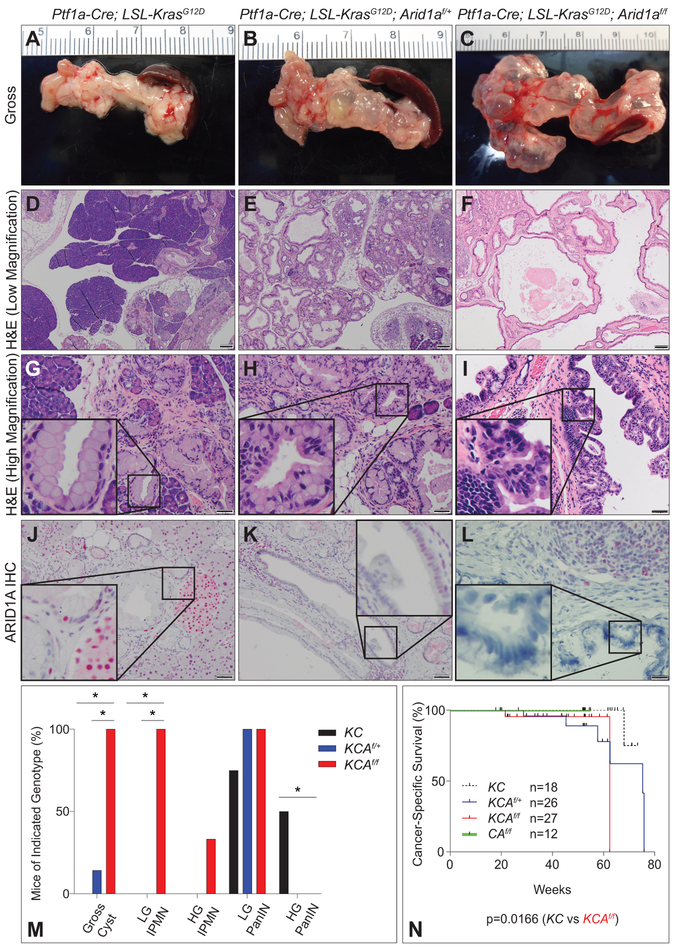Figure 5.
KrasG12D and Arid1a loss cooperate to form IPMN. Cohorts of Ptf1a-Cre; KrasG12D (KC), Ptf1a-Cre; KrasG12D; Arid1af/+ (KCAf/+) and Ptf1a-Cre; KrasG12D; Arid1af/f (KCAf/f) were followed longitudinally. Gross images of (A) KC, (B) KCAf/+, and (C) KCAf/f showing large cysts in KCAf/f. H&E at low magnification of (D) KC, (E) KCAf/+, and (F) KCAf/f mice showing a shift from PanIN to IPMN with loss of Arid1a. Bar=200 μm. High magnification of (G) KC, (H) KCAf/+, and (I) KCAf/f mice demonstrates PanIN (G,H) and area of high grade dysplasia within IPMN (I). ARID1A IHC shows retained expression in PanIN in (J) KC, variable retention in (K) KCAf/+ lesions and loss of expression in (L) KCAf/f IPMN. Bar=50 μm. (M) Quantification of percent incidence of gross cysts, low-grade (LG) IPMN, high-grade (HG) IPMN, LG PanIN, and HG PanIN in mice sacrificed between the ages of 12 and 20 weeks; n=8 mice for KC, 7 mice for KCAf/+, 9 mice for KCAf/f, *p<0.05. (N) Kaplan-Meier analysis shows decreased cancer-specific survival (CSS) in KCAf/f compared to KC (p<0.0166, median CSS of KC (black, n=18) and CAf/f (green, n=12) are undefined, whereas KCAf/+ is 75.29 weeks (blue, n=26), and KCAf/f is 62.43 weeks (red, n=27)).

